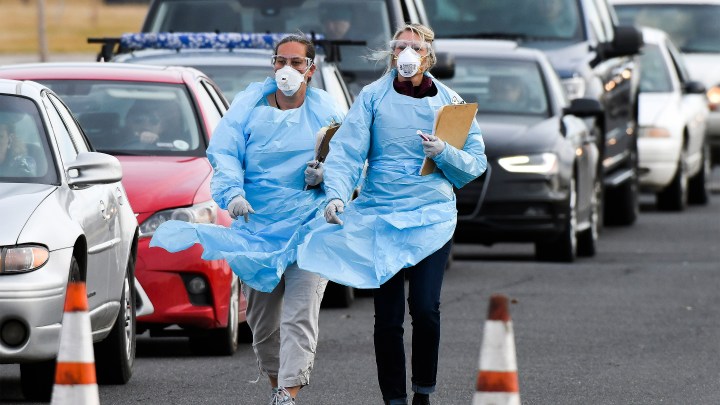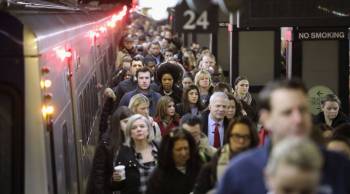
45 states just started a new fiscal year. None are celebrating.
45 states just started a new fiscal year. None are celebrating.

In 45 states, you can wish state officials a happy new year. That’s because they started new fiscal years a week ago, on July 1. All of them are heading into this new year with reduced revenue, shaky budgets and a lot of uncertainty.
What a difference six months make. Urban Institute fellow Kim Rueben said when the calendar year started, states were feeling optimistic.
They were “predicting more money coming in, then they were forecasting more money possibly than the year before,” Rueben said. “And then March happened, and the bottom dropped out.”
People stayed home and spent less — there went sales tax. Millions of people lost their jobs — there went a whole bunch of income tax. Meanwhile, Rueben said, states had to spend more on swelling Medicaid rolls and soaring unemployment claims, all while beefing up their response to the health impact of the coronavirus pandemic. Kind of like a typical recession but it’s “much more dramatic right now because of the suddenness, and how we closed the economy. And the fact that this is all being driven by this public health issue.”
States got some help from the federal government, and some dipped into their rainy-day funds. They also got help from the expanded unemployment benefits and relief checks.
Kathryn White, director of budget process studies with the National Association of State Budget Officers, said those “have helped temporarily prop up the economy, and therefore state tax revenues, but those are going to run out.”
The Tax Policy Center estimates that states ended last fiscal year with $75 billion in shortfalls and face an additional $125 billion in this one. And there’s a lot of uncertainty playing into that number, according to Jeffrey Clemens, an economics professor at the University of California, San Diego.
Businesses may open or stay closed, and COVID-19 cases keep rising. State budget officials don’t have a full picture of what they’re working with. Going forward, Clemens said, states can either raise taxes “or they can find ways to scrimp and save and cut expenditures.”
Some states are already doing that. Washington is furloughing workers, and Ohio is planning cuts to K-12 education. And then there’s borrowing.
“Given the magnitude of the problems that they’re facing, they’re going to have to consider all the options that are on the table,” said Adam Levin, with the state fiscal health team at the Pew Charitable Trusts.
He said the Federal Reserve has set up a new borrowing program for states, but so far only Illinois has tapped it.
There’s a lot happening in the world. Through it all, Marketplace is here for you.
You rely on Marketplace to break down the world’s events and tell you how it affects you in a fact-based, approachable way. We rely on your financial support to keep making that possible.
Your donation today powers the independent journalism that you rely on. For just $5/month, you can help sustain Marketplace so we can keep reporting on the things that matter to you.


















